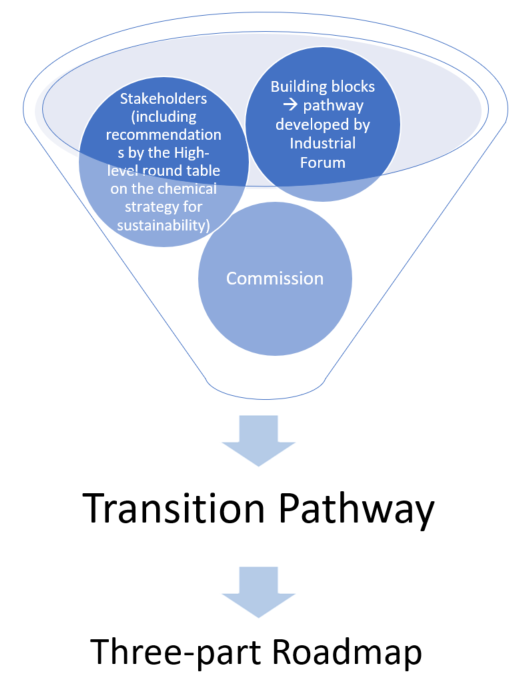From the SDGs Roadmap to Sectoral Roadmaps to the Transition Pathway for the Chemical Industry
I would argue that the most effective way to drive any transformation is to define and execute a well-crafted strategy roadmap, which makes a vision come to fruition by achieving clear specific milestones within a value chain.
From the SDGs roadmap
When it comes to the chemical sector, collectively it was decided in 2018 to focus on the United Nations Sustainable Development Goals (SDG’s) to articulate the joint vision on what the key impact opportunities to contribute to its most material SDGs and specific SDG targets were. This pioneering work from the World Business Council for Sustainable Development (WBCSD) together with companies across the sector created the Chemical Sector SDG Roadmap.
In order to articulate a joint vision, SDGs sectoral roadmaps are a proper tool to highlight contribution opportunities towards the framework agenda. Nevertheless, as critics indicate, as long as the roadmap is not binding, it will only serve to the purpose of developing a common understanding for the private sector.
To Sectoral Roadmaps
‘One size fits all’ approach does not apply to the decarbonisation of the chemical industry. And, to come up with the four transversal areas that will determine how to accelerate the deployment of the decarbonisation roadmap for the chemical industry, as I understand them, for my master thesis, I reviewed different roadmaps available back in 2021. At that time, the idea of sectoral roadmaps was starting to take form. The European Round Table for Industry saw Sectoral Roadmaps as strategy and “soft” policy guidance providers. And the chemical industry was joining forces with the European Commission to define their strategic roadmap, which was imperative in order to gain commitments and drive acceleration in the decarbonisation rate of the industrial sectors.
As a reflection of its complex nature, neither of the roadmaps I examined pivoted equally on the same focal points of attention nor did they always cover similar sectors in their scope. In first place, assessing how to approach the decarbonisation pathways of an individual industrial sector requires comprehending all the actors’ standing point. Therefore, the selected roadmaps I analysed to identify the main decarbonisation focal points of interest are commissioned by decision-making and influencing parties, from policy makers, organizations, academia and consultancy firms. Here there is the list of references I used:
Policy makers:
European Commission (EC): Final Report of the High-Level Panel of the European Decarbonisation Pathways Initiative, 2018.
Organizations:
The Sustainable Development Solutions Network (SDSN) in collaboration with the Fondazione Eni Enrico Mattei (FEEM): Roadmap to 2050 A Manual for Nations to Decarbonize by Mid-Century, 2019.
The European Chemical Industry Council (Cefic): European chemistry for growth Unlocking a competitive, low carbon and energy efficient future, 2019.
The International Energy Agency (IEA): The Future of Petrochemicals Towards more sustainable plastics and fertilizers, 2018.
Academic researchers:
University of Virginia Darden School of Business: . Path to 2060: Decarbonizing the Industrial Sector, 2018.
The Institute for European Studies (IES) at the Vrije Universiteit Brussel (VUB). Industrial value chain–A bridge towards a carbon neutral Europe, 2018.
Consultancy firms:
McKinsey & Company. Decarbonization of industrial sectors: the next frontier, 2018.
A comprehensive overview of the sectors in scope and points of discussion per roadmap is displayed on the table below. The petrochemical industry is mainly embed with other energy intensive industries when the decarbonisation paths are described, only the closest organizations to the sector, namely, Cefic and IEA, treat this industry as single point of interest in their scope. Moreover, along the seven roadmaps object of analysis, similar number of focal points can be identified. When breaking these down into groups of interests, it can be argued that the role of the industry in the society and its interactions with other industries is somehow of importance to frame the issue. While as a second focal point, the industrial emissions and the use of emissions scenarios help to understand the magnitude of the problem and call for action.
Author´s own research.
The state of decarbonisation technologies that can accelerate the global shift towards decarbonisation is key to start addressing solutions and their impact on emission reduction linked to certain conditions and timeframes. Lastly, the need of a change in the policy framework is fundamental to make decarbonisation a reality. Whereas policy framework covers a diverse range of requirements, common to all roadmaps is highlighting the need of research and innovation. Nonetheless, only the European Commission roadmap focuses in what should specifically be the strategic approach to Research and Innovation to deliver the zero-carbon solutions needed, while also promoting industrial competitiveness in the EU economy. It describes how the EU should structure R&I actions for the decarbonisation of industrial sectors around four key priorities (1) Energy efficiency and material savings. (2) Deep electrification. (3) Embedding industrial processes in the circular economy. (4) Innovation in zero-carbon breakthroughs for process-based emissions industries.
I found to be common in all the roadmaps the call for investments and action; however they do not deepen into the available tools to achieve both requirements.
To the Transition Pathway
The launch of the EU Transition Pathway for the chemical industry marks the next step in the creation of the necessary roadmap to achieve the transformational journey to tackle the challenges the chemical industry is facing. The pathway is a collaborative effort, that provides a strong starting point for long-term success. The outcome of the pathway is a three-part roadmap and the result of a co-creation process.
Author´s own research.

